Significance
Taichung’s Wanhe Temple is closely associated with the history of the Chinese people in the Taichung area. The neighborhood in which it was constructed was originally known as Li-Tou-Dian, or Plough Shops, because early residents of the area established a number of forges for fabricating farming implements. As Taichung City’s earliest street, Li-Tou Dian features buildings whose architecture reflects the traditional styles of the Chinese cities of Zhangzhou and Quanzhou. The whole area is a physical embodiment of the legacy of Taichung’s early settlers, who immigrated not only from Zhangzhou and Quanzhou, but also from other mainland cities of Chaozhou, Huizhou, Tingzhou, and Jiayingzhou. Wanhe Temple is unique for many reasons. Among them is a belief that its second Mazu statue, called Lao’er Ma, hosts the incarnated spirit of a daughter of Taichung’s Liao family. This belief reflects the local residents’ heartfelt, closely connected relationships with one another. Another attribute of Wanhe Temple is its Surname Folk Opera (zìxìngxì)—two months of performances organized in turns by twenty-eight different kinship lineages—to thank Mazu for her blessings. The performances are closely tied to the area’s development, and are an excellent example of a local tradition.
History
Wanhe Temple is also known as “Li-Tou-Dian Temple of the Holy Mother.” The temple primarily worships Mazu, a patron goddess of the sea who is also referred to as the Holy Mother. The temple’s primary Mazu statue is referred to by believers as the Lao’da Ma, or Great Mother. In 1684, immigrants travelling from Meizhou, China to Taiwan brought a statue of Mazu with them to watch over their ship and voyage. They initially settled in the Nantun District of Taichung City. In 1726, twelve believers from the Zhang, Liao, Jian, Lai, Huang, Jiang, He, Yang, Dai, Liu, Chen, and Lin families sponsored the construction of a temple for the statue and named it Wanhe Temple. In 1803, a second Mazu statue, Lao'er Ma (the Second Mother), was added to the temple. According to the temple’s historical records, a needlework merchant passing by the temple during the Dotting the Eyes Ceremony (a ceremony to consecrate a statue with the spirit of Mazu) met a young girl. The girl claimed to be Liao Ping-Niang from Dayuchi in Xitun District. She asked the merchant to tell her parents that there were silver coins buried under the osmanthus tree in front of their house which would be enough money to take care of them, and that they should not be sad. When the merchant delivered the message, Liao's parents raced into their daughters’ bedroom and discovered that she had passed away in her room. Subsequently, the Liao family visited Wanhe Temple and saw teardrops falling from the Lao'er Ma statue. The locals became convinced that Liao Ping-Niang had incarnated into the Lao'er Ma statue. This legend eventually led to the beginning of a parental visit parade during the third month of the lunar calendar, during which the Lao’er Ma statue is taken on a tour back to Xitun District to visit her hometown. In 2012, the parade was recognized as a Taichung municipal cultural heritage event under the folk custom category. Wanhe Temple’s other famous event—the Surname Folk Opera—had its beginnings as a form of local entertainment. In early nineteenth century, around the time Babuza (today’s Taichung basin) was fully developed, local residents began to attend thanksgiving performances at the temple for entertainment. The performances eventually evolved into a major feature of the local culture. In 2011, the opera performances were also listed by Taichung City as a municipal cultural heritage event in the folk customs category.
Special Features

1The Temple LayoutWanhe Temple is the oldest temple in Taichung City and is modeled on the architectural traditions of Zhangzhou and Quanzhou Cities. This style consists of three buildings of the same width—the Sanchuan Hall, the Main Hall, and the Rear Hall—arranged in a row from front to back, with two wings running along either side, linking the buildings together. Seen from above, the temple layout forms the shape of the Chinese character sun (日). The front part of the main and rear halls are used as worship halls. There are courtyards between the buildings. This type of architecture is also sometimes referred to as a “three kaijian vertical design” (kaijian is an ancient Chinese architectural unit denoting width of the front facade).
2The Yellow River Map on the Back of a Dragon Horse The front façade of the Sanchuan Hall has three kaijian, meaning three sections divided by pillars. The doors of each section sit inwards from the front vertical plan of the building, with the walls on each side protruding outward to form a "凹" shape for each section. In the middle section, the exposed beam roof has an extra gable added overhead, making it is significantly taller than the roof sections on the left and right. This design results in a double roof ridge, one on top of another, with a decorated entablature between them. The entablature is referred to as the Xi Shi Ridge—Xi Shi being one of the renowned four beauties of ancient China—because it is always intricately decorated with jiǎnnián (a mosaic-like traditional cut-and-paste porcelain craft), Koji ceramics, and clay sculptures. Right on the center of the roof of Wanhe Temple’s Sanchuan Hall is a Koji ceramic piece known as “The Yellow River Map on the Back of a Dragon Horse.” The so-called “Yellow River Map” is in fact a diagram related to ancient Chinese mathematics and divination. It is also mentioned in legends as a symbol of peace and security. The dragon horse represents posterity and peace. This ceramic beast is among Wanhe Temple’s most precious treasures.
The front façade of the Sanchuan Hall has three kaijian, meaning three sections divided by pillars. The doors of each section sit inwards from the front vertical plan of the building, with the walls on each side protruding outward to form a "凹" shape for each section. In the middle section, the exposed beam roof has an extra gable added overhead, making it is significantly taller than the roof sections on the left and right. This design results in a double roof ridge, one on top of another, with a decorated entablature between them. The entablature is referred to as the Xi Shi Ridge—Xi Shi being one of the renowned four beauties of ancient China—because it is always intricately decorated with jiǎnnián (a mosaic-like traditional cut-and-paste porcelain craft), Koji ceramics, and clay sculptures. Right on the center of the roof of Wanhe Temple’s Sanchuan Hall is a Koji ceramic piece known as “The Yellow River Map on the Back of a Dragon Horse.” The so-called “Yellow River Map” is in fact a diagram related to ancient Chinese mathematics and divination. It is also mentioned in legends as a symbol of peace and security. The dragon horse represents posterity and peace. This ceramic beast is among Wanhe Temple’s most precious treasures.
3Taichung’s First Inscription Plaque—“Good Tidings to Taiwan”When construction of Wanhe Temple was completed in 1727, Peng Chao-Gui (a captain of the local’s armed forces whose dates of birth and death are unknown)donated an inscription plaque to the temple. It is now the oldest inscription plaque in Taichung City. Currently hanging in the Sanchuan Hall, this plaque is a work of significant historical value.
4The Surname Folk OperaWanhe Temple’s Surname Folk Opera (zìxìngxì) has a very long history. It consists of two months of performances organized by 28 families (kinship groups with shared surnames) to thank Mazu for her blessings. According to legend, in 1824, the Lao'er Ma statue accompanied a Mazu statue from Hanxi on her Eighteen Villages Celebration Parade around Nantun District. At the end of the parade, the statue mysteriously became so heavy that the palanquin bearers couldn’t return to Wanhe Temple. Uncertain as to what to do, the believers conducted Poe divination—a traditional Chinese divination method, in which moon-shaped wooden blocks are thrown and the way they land interpreted to determine divine guidance. Divination results instructed them put on a folk opera performance to entertain Mazu. Subsequently, the different surname kinship groups began alternating responsibility for the Three-Offering Ceremony (sānxiànlǐ) and the performance of the Liyuan Opera to entertain Mazu every year on the twenty-first day of the third lunar month. This tradition continues today. In honor of General Zhang Guo, who brought the statue of Mazu to Wanhe Temple and first established Li-Tou-Dian, the celebration always begins with the Zhang family. It ends with the Lin Family, since Mazu’s surname is also believed to be Lin, and this arrangement reflects humility. This way of organizing the opera is referred to as the Zhang-to-Lin routine.
5The Goddess Lao'er Ma Visits Her Parents
 The parental visit parade to Xitun District by the Goddess Lao'er Ma is organized by the Dan-Qing-Ji Mazu Association. The parade was originally held once a year, but later extended to once every three years. Regardless, it is a very important folk custom for believers from Xitun District. The parade is held during the third month of the lunar calendar, with numerous people living enroute setting up alters, burning incense, and providing food for parade members. In fact, the parade route eventually became so crowded that a second statue had to be made to allow for a second parade route. Only the original Lao'er Ma statue visits Lie-Mei Hall (a monument built in honor of Lao’er Ma’s ancestors, the Liao family). The two Mazu statues then end their parade at Qingling Temple. The event concludes with a thundering climax of drumbeats and firecrackers.
The parental visit parade to Xitun District by the Goddess Lao'er Ma is organized by the Dan-Qing-Ji Mazu Association. The parade was originally held once a year, but later extended to once every three years. Regardless, it is a very important folk custom for believers from Xitun District. The parade is held during the third month of the lunar calendar, with numerous people living enroute setting up alters, burning incense, and providing food for parade members. In fact, the parade route eventually became so crowded that a second statue had to be made to allow for a second parade route. Only the original Lao'er Ma statue visits Lie-Mei Hall (a monument built in honor of Lao’er Ma’s ancestors, the Liao family). The two Mazu statues then end their parade at Qingling Temple. The event concludes with a thundering climax of drumbeats and firecrackers.
Reminders
The parental visit parade to Xitun District by the Goddess Lao'er is held once every three years on the fourteenth and fifteenth day of the third month of the lunar calendar. The parade includes two statues traveling two different routes. The parades follow set routes and the routes always end at the Qingling Temple in Xitun District.
Panoramic
Directions